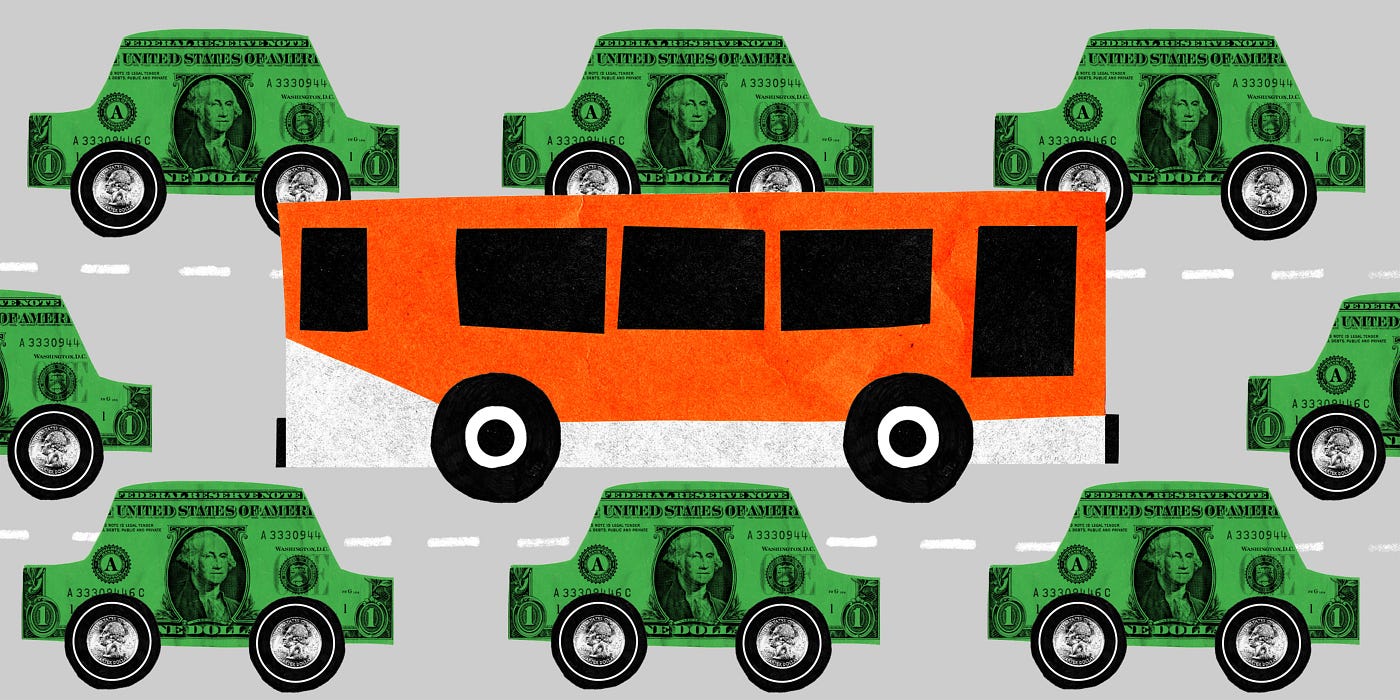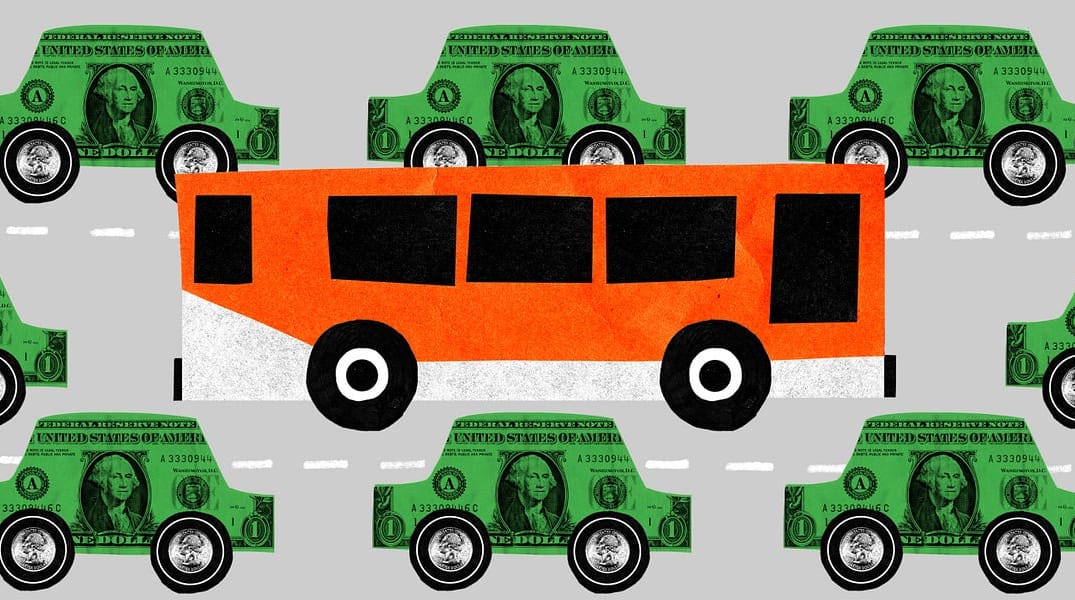
I said good-bye to my 1996 Volkswagen Jetta at an impound lot somewhere in the hinterlands of South Los Angeles about three years ago. Before that moment, I never once considered riding public transportation. I didn’t know one person who rode the bus, so I assumed the buses didn’t work well or were dangerous. Like most Angelenos, I was skeptical about LA’s buses, but when circumstances forced me to the test this theory, I realized that one of the city’s best resources remains far too untapped.
After losing my car, it took me several months to even consider the bus as an option. With my bike and an old-lady cart, I relegated myself to traveling within only a two-mile radius from my home near USC. The microcosm I created for myself had its benefits, but I was obviously limited by how far my little legs could take me. At the urging of my boss, who watched me fumble with my rigorous biking routine with a five-year-old kid in tow, I finally took a chance on the bus and hopped onto the 37 line for first time. To my surprise, riding public transportation wasn’t a completely horrific experience. The buses ran at regular intervals. There was real-time arrival information available. The buses made frequent stops too — just like in other public-transportation-friendly cities. They even had asshole drivers like other cities. I also realized that it was only a 20-minute bus ride to downtown from my place. Additionally, the newly completed Metro Expo Line brought with it a wealth of destinations I could reach without a car.
The prospect of living outside of my car bubble was exhilarating; however, others were worried. In cities like New York and San Francisco, all walks of life utilize public transportation. However, everyone in LA — outsiders, transplants, and locals alike — seem to think that life without a car is a death sentence. My family was very concerned about my safety and my ability to function successfully. A coworker of mine, who grew up in East LA, would much rather shuttle her three teenage children around the city than let them get on a city bus. Across the board, the message is clear: do not get on a bus.
While safety and convenience appear to be the reasons to avoid public transportation, the subtext here is actually poverty. Bus riders are, for the most part, people who don’t own cars. And if you don’t own a car, then it must be because you can’t afford one.
While safety and convenience appear to be the reasons to avoid public transportation, the subtext here is actually poverty. Bus riders are, for the most part, people who don’t own cars. And if you don’t own a car, then it must be because you can’t afford one. And if you can’t afford one, then you must be poor. And here in LA, the poor tend to be people of color. In a city obsessed with appearances, riding the bus associates you with poverty. In talking to my fellow bus-riding coworkers, I realized that we’ve all experienced the shame associated with riding public transportation. Although the message isn’t communicated overtly, you do intuit a sense of judgment from others. You can feel it in the puzzled stares of strangers as you stand at the bus stop in formal work attire. Their crinkled brows say, “You look like you can afford a car. Why are you at the bus stop?” Or you can tell from the sense of urgency your friends express as they offer you a ride, as if they are saving you from an impending death. When I told someone at a friend’s company Christmas party that I take the bus, he looked at me with shock and disbelief. The look on his face said, “Really?! You don’t look that poor to me!” The bus symbolizes the great divide here between the haves and have-nots. Unfortunately, the stigma associated with riding the bus is so strong here that it becomes ingrained in people’s psyches. As a result, most people never even consider riding it.
Today, I actually own a car, which I share with my boyfriend. I work downtown and live just south of there in West Adams, so I opt to use the bus for my daily commute. Although having a car is practical for certain things, moving further away from my dependence on it feels liberating. I don’t miss the days of throwing my money down an endless pit just to keep my aging vehicle on the road. Knowing that another option exists feels like I have a safety net. Riding the bus might seem abysmal compared to owning your own method of transport, but not worrying about a car payment, insurance, repairs, or gas is a dream for most Angelenos. You’d think more people would wise up and trade in their car keys for a TAP card.
I’m not saying that the bus is always a pleasant experience. Like in any other major city, public transportation in LA is not without its disadvantages. Sharing space with dozens of strangers every day is a challenge. Lack of common courtesy sometimes astounds me. At least back in the day, people had boom boxes that offered some degree of sound quality. These days people assume you want to hear their shitty music blaring on their shitty cell-phone speakers. Another thing I can’t stand is when people recount their miserable lives loudly on their cell phones to whatever poor soul is on the other end. Also, people here don’t seem to get that putting all your bags on the seat next to you on a full bus makes you look like an asshole. I can bitch about these things for days.
Despite the bus being relatively safe and functional and the fact that traffic in LA is constantly increasing, Angelenos still refuse to get on. According to statistics, bus ridership has been at a flat line for the past five years. While rail ridership has increased by 18% since 2009, the stigma against riding the bus is still alive and well.
And, of course, there is the street harassment you endure at the bus stop. I’ve had a drunken stranger try to pet my daughter. A woman high out of her mind came up to me and tried to grab my hair. Just the other day, I simultaneously became the victim of a catcall and street evangelism. “Beautiful lady! Someone might kill you! You better pray to God! He will save you!”
Although there is plenty to gripe about, my complaints don’t vary from the experiences of those who take public transit in any other American metropolis. Despite the bus being relatively safe and functional and the fact that traffic in LA is constantly increasing, Angelenos still refuse to get on. According to statistics, bus ridership has been at a flat line for the past five years. While rail ridership has increased by 18% since 2009, the stigma against riding the bus is still alive and well.
People often say that LA doesn’t feel like a real city. I think most of this feeling is derived from the lack of people on the street. Getting on a bus, however, makes you feel like you’re living in an actual urban center. Somehow popping into a local bakery for a croissant, grabbing an LA Weekly at the corner store, and reading it on the way to work makes you feel like you are part of a bigger community. Although statistics say otherwise, on the ground I do see people becoming more open to alternative methods of transportation. Los Angeles has plans to create more pedestrian-friendly public spaces. With the passage of Measure R in 2008, which secured $25 billion for transit development over 30 years, public transportation is only going to get better.
I look forward to LA looking and feeling more like a real city, a place where you might even run into an old friend when you’re walking down the street on the way to your bus stop.
Want more LA content from The Bold Italic? Follow our LA Facebook page.







